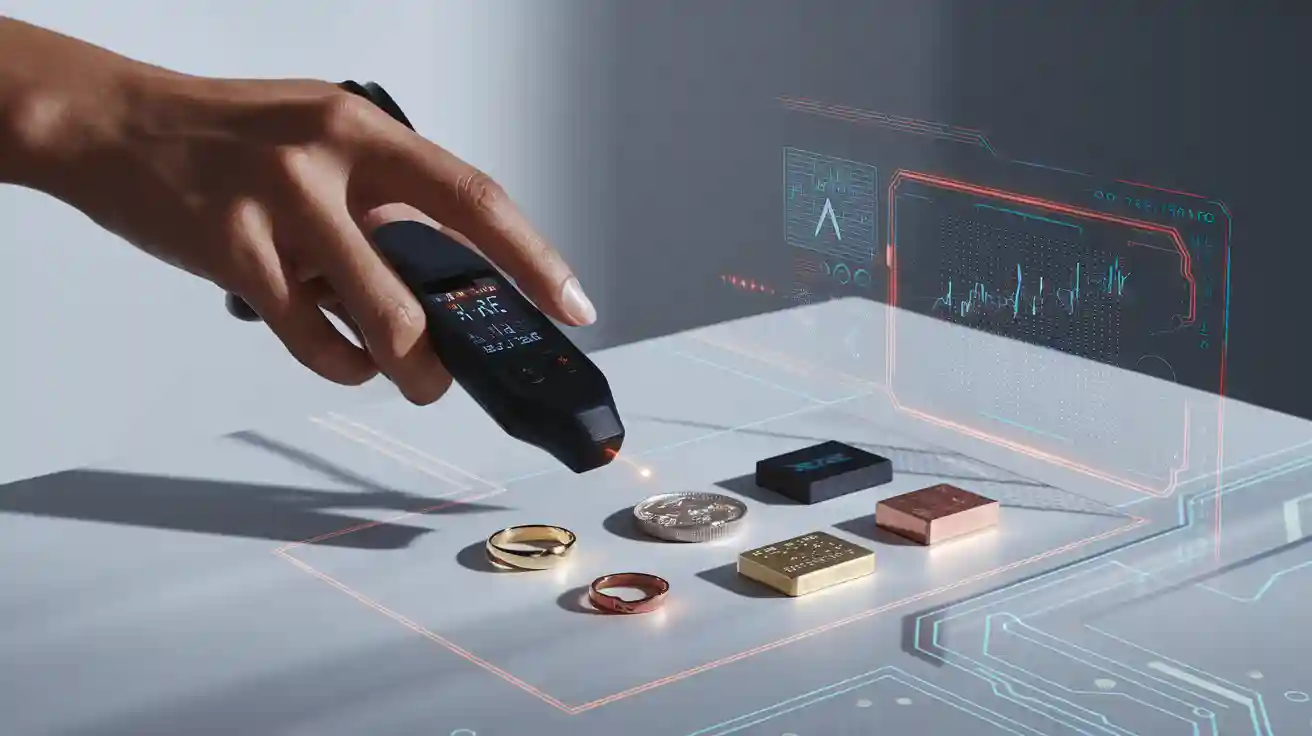ما هي أخطاء اختبار الذهب الأكثر شيوعًا?
قد يبدو اختبار الذهب واضحًا ومباشرًا, but in practice, many professionals and hobbyists fall into avoidable traps that compromise accuracy. Whether you are a jeweler verifying stock, a pawnshop appraising incoming items, or a recycler sorting raw material, even small mistakes can result in costly misjudgments. Gold testing is not just about knowing the method—it’s about applying it correctly and consistently.

أقل, we’ll go through the most common mistakes people make when testing gold, why they happen, and how to avoid them. Each point comes from real-world testing scenarios, ensuring you can identify issues before they affect your results.
1. Using the Wrong Testing Method for the Job
One of the biggest pitfalls is choosing a testing method unsuitable for the type of gold item. على سبيل المثال, acid tests can be misleading with plated items or high-karat alloys, while cheap electronic testers may fail to detect subtle alloy differences.
Why it’s a problem: Incorrect methods lead to false positives or inaccurate karat readings.
How to avoid it: Match the method to the purpose. For commercial accuracy and non-destructive testing, محلل XRFs like the VR-X3 أو VR-X5 deliver precise readings for all gold purity levels without damaging the sample.
2. Failing to Account for Surface Contamination
الأوساخ, زيت, تصفيح, or oxidation on the gold’s surface can skew results, especially with contact-based or optical testing.
Why it’s a problem: Contaminants can mask the actual metal composition, leading to underestimation or overestimation of purity.
How to avoid it: Clean the sample properly before testing, but avoid abrasive methods that remove material. XRF systems, مثل VR-T5 أو VR-T6, use top-down measurement to analyze even irregular shapes without being affected by minor surface residues.
3. Testing in Unstable Conditions
Gold testing requires stable conditions—temperature, رطوبة, and vibration can affect certain instruments.
Why it’s a problem: Inconsistent readings can happen if the environment is too hot, cold, or dusty, especially with handheld devices.
How to avoid it: Calibrate equipment in stable environments. Portable options like the VR-M5 أو VR-H5 feature intelligent battery management and internal shielding, making them reliable for both indoor and outdoor testing.
4. Overlooking Alloyed Elements
Some gold items contain non-gold elements—copper, النيكل, palladium—that affect karat levels. Relying only on visual cues or partial readings risks missing these alloys.
Why it’s a problem: Incorrect assessment of alloys can cause financial losses or failed compliance with quality standards.
How to avoid it: Use devices capable of multi-element analysis. ال VR-T9, with ±0.001% precision, detects trace elements for high-purity gold verification, making it ideal for quality control in manufacturing and refining.
5. Ignoring Calibration and Maintenance
Even the most advanced محلل الذهب needs periodic calibration and maintenance to ensure consistent accuracy.
Why it’s a problem: متأخر , بعد فوات الوقت, sensors and detectors may drift, producing inaccurate results.
How to avoid it: Follow the manufacturer’s calibration schedule and use certified reference samples. VRAY analyzers are designed with built-in self-diagnostics and protective features such as X-ray tube aging control, minimizing downtime and maintenance needs.
6. Misinterpreting Test Results
Numbers alone don’t tell the whole story—understanding what they mean is equally important.
Why it’s a problem: A reading of “18K” may not mean the gold is authentic if it’s only plated to that purity on the surface.
How to avoid it: Combine your test results with knowledge of item construction and manufacturing trends. VRAY devices, مثل VR-S6, provide spectrum comparison functions to identify inconsistencies quickly.
7. Relying on a Single Test
Using only one method—acid, مغناطيس, or density—limits accuracy. Cross-checking with more than one method or device gives more reliable results.
Why it’s a problem: A false reading from one method may go unnoticed without verification.
How to avoid it: For high-value transactions, confirm results with an advanced non-destructive device. Portable XRF units like the VR-H5 can complement traditional methods, providing on-the-spot verification.
Why VRAY Analyzers Minimize Gold Testing Errors

VRAY Instruments has designed its product line to address each of these common mistakes:
- VR-X3 & VR-X5 – Best for jewelry shops and refineries needing accurate, non-destructive purity testing.
- VR-M5 & VR-H5 – Portable solutions for mobile appraisers, مكاتب الرهونات, and recycling operations.
- VR-T5 & VR-T6 – Ideal for mixed sample types, الطلاءات, ومختبرات مراقبة الجودة.
- VR-T9 – Ultra-high precision for high-purity gold QC.
- VR-S6 – Compact benchtop model with full-range elemental analysis.
By using the right VRAY analyzer for your specific needs, you can avoid costly testing mistakes, protect your reputation, and ensure compliance with industry standards.
الأسئلة المتداولة
س1:Can XRF analyzers detect gold plating?
أ1:نعم. XRF technology can differentiate between plating and solid gold by detecting elemental composition through the surface.
Q2:How accurate are VRAY XRF analyzers compared to acid tests?
A2:VRAY analyzers offer ±0.03% precision (and ±0.001% for the VR-T9), far exceeding the accuracy of acid testing, دون إتلاف العنصر.
س 3:Do portable اختبار الذهبs compromise accuracy?
A3:Not with VRAY’s designs—models like the VR-H5 use dual-beam technology and smart calibration to ensure consistent field results.
س 4:How often should I calibrate my analyzer?
A4:Follow the recommended schedule in the manual. VRAY devices include self-diagnostics and require minimal recalibration.
س 5:Can VRAY analyzers test other precious metals besides gold?
A5:نعم. All VRAY analyzers can measure silver, بلاتين, البلاديوم, روديوم, and other PMG metals with high accuracy.

واتساب
امسح رمز الاستجابة السريعة ضوئيا لبدء دردشة WhatsApp معنا.